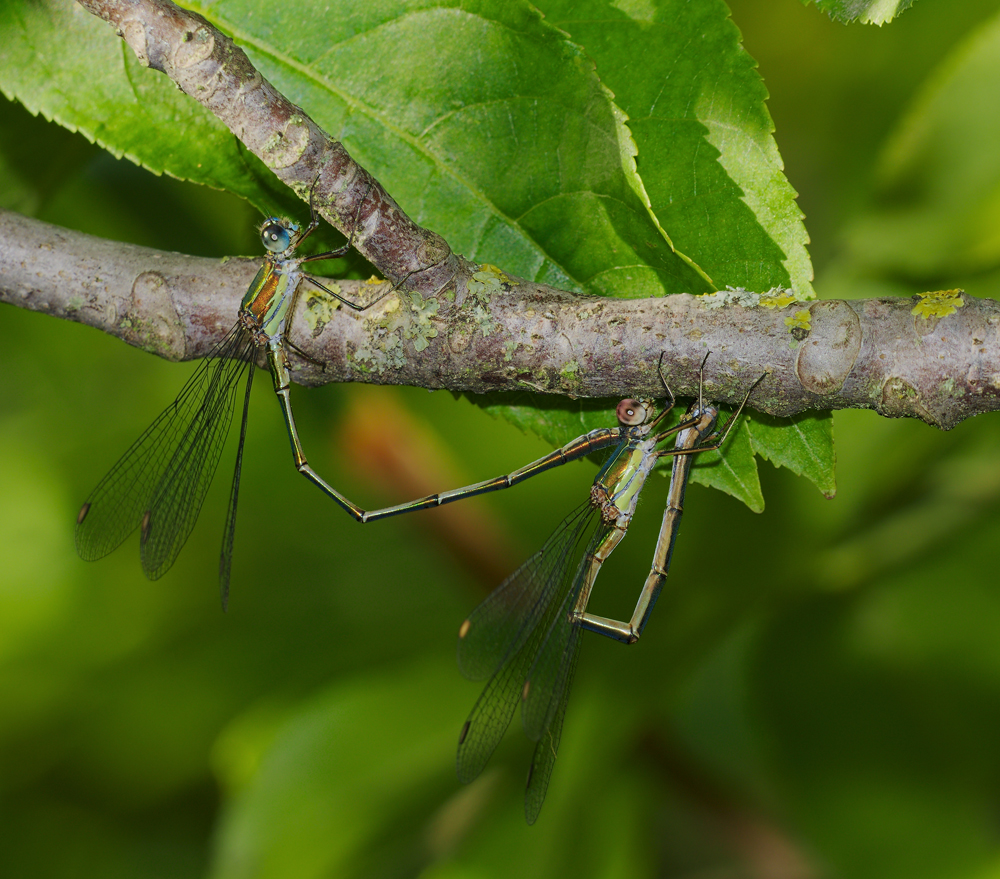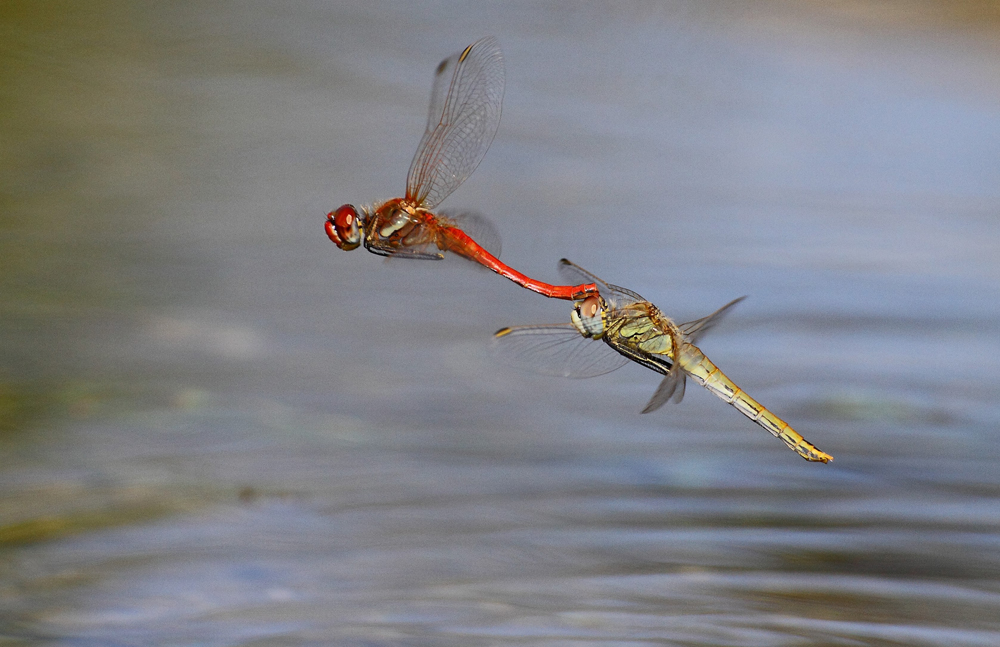How do dragonflies and damselflies grow and start to fly?
A naturalist in the Gulbenkian Garden
During copulation, when the female has already chosen the male and when they have both made the nuptial flight, the two often come together “in a heart-shaped position”, explains the “Insetos em Ordem” book, in the chapter on dragonflies and damselflies.
How does that happen? The male has an organ to which he transfers the sperm, the secondary genitalia, which is under the abdomen. At the end of it, are tweezers which he uses to hold the female’s head. Copulation occurs when the female bends her own abdomen so that it comes into contact with the male’s secondary genitalia. This is how they form the heart shape, sometimes in full flight, and can remain united for just a few seconds or for several hours.

The female may even start laying eggs when the couple are still united. The takes place at different locations, depending on the species, explains Albano Soares, a specialist who works with Tagis – Butterflies Conservation Centre.
For example, damselflies always lay their eggs in water plants or near water, or in places that will come to have water, describes the researcher. In the latter case, “the eggs take two or three months to hatch.”
Dragonflies, on the other hand, have more varied patterns of behaviour: some choose rivers or lakes, but red-veined darter dragonflies (Sympetrum fonscolombii) prefer to lay eggs in low-flow waters, even in tanks of water and garden ponds, for example. Some species opt for dry mud and others choose plants hanging over water.
On the branches of a willow tree that hangs over a small lake in the Gulbenkian Garden, for example, you can sometimes find willow emerald damselfly (Chalcolestes viridis) eggs, on the branches’ bark, notes Albano Soares.

So how do dragonflies and damselflies grow? “After they are born, the larvae are voracious predators.” They eat the larvae of other insects, small invertebrates, larvae of fish and also of frogs. They remain in the water until they become adults – which may take just three months or another year, as is the case with the ringed dragonfly (Cordulegaster boltonii).
Unlike butterflies, for example, which undergo a complete metamorphosis, members of the order Odonata “already have a body similar to that of an adult when they are larvae”, explains the specialist. “Its body is separated into three parts, it has three pairs of legs and a pair of antennae. The only reason their wings are not fully developed is because they live in water during that phase.”
Life change
As they have an exoskeleton, a resistant and flexible cuticle that supports them but does not grow at the same rate they grow, “they shed their skin and then grow new skin as they grow”. “The last shedding is the definitive one, when they have to leave the water. Otherwise, they drown, as they are unable to breathe underwater. The skin breaks and they set off, now with their wings formed.”
After they start flying and reach sexual maturity, most dragonflies and damselflies live for only a few months or even just a few weeks, during the reproduction phase. Some migrate to other locations, such as the lesser emperor (Anax Parthenope) and the red-veined darter dragonfly (Sympetrum fonscolombii), which can be found in Lisbon flying northwards in the late summer and autumn. Are they heading to the north of Portugal? To Galicia? Nobody knows yet.

Species such as the migrant hawker (Aeshna mixta) leave the water and start to fly at the end of summer or in autumn, although most of these insects are found in spring and summer. Of course, with the general increase in temperatures, we may be lucky and spot a species of dragonfly flying around at any time of the year, even in city gardens.
According to Albano Soares, it is very important to conserve aquatic habitats in order to protect these species: “Do not use chemical pollutants and be careful with invasive plants that choke the life out of lakes, such as hyacinths and water ferns (azolla spp.), as they remove oxygen from the water. Many people believe that ponds are focal points for mosquitoes but that only happens when there is an imbalance, for example, when radical cleaning eliminates all predators, such as the dragonfly nymphs that consume large quantities of mosquito larvae”, he explains.
To learn more about these and other insects, consult the catalogue of the Insetos em Ordem exhibition and to find out more about the dragonfly and damselfly species that exist in Portugal, read the “Libélulas de Portugal” book, by Ernestino Maravalhas and Albano Soares.

